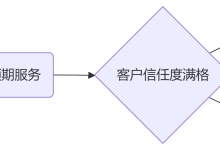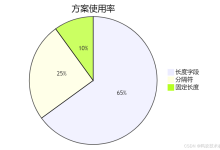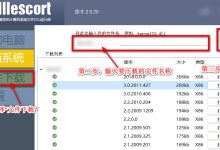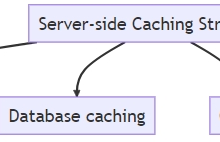一、实时通信技术演进背景
1.1 传统实时通信方案的局限
在 Web 1.0 时代,实时数据更新主要依赖以下技术:
-
短轮询(Short Polling):定时发送 HTTP 请求
setInterval(() => {
fetch('/api/updates')
.then(res => res.json())
}, 5000)- 优点:实现简单
- 缺点:网络资源浪费、更新延迟高
-
长轮询(Long Polling):保持连接直到数据更新
function longPoll() {
fetch('/api/updates')
.then(res => {
processData(res.json());
longPoll();
})
}- 优点:减少请求次数
- 缺点:服务器连接资源消耗大
1.2 现代实时通信需求
- 金融交易系统:毫秒级行情更新
- 社交平台:实时消息推送
- IoT 仪表盘:设备状态即时同步
- 在线协作工具:多用户协同操作
二、EventSource 核心技术解析
2.1 协议规范与工作原理
SSE(Server-Sent Events)协议特征:
- 基于标准 HTTP/HTTPS 协议
- 单向通信:服务端 -> 客户端
- 文本数据流传输
- 默认支持断线重连
- MIME 类型:text/event-stream
通信流程:
2.2 核心 API 接口
const eventSource = new EventSource('/api/stream');
// 基础事件监听
eventSource.onmessage = (event) => {
console.log('New message:', event.data);
};
// 自定义事件处理
eventSource.addEventListener('stockUpdate', (e) => {
const data = JSON.parse(e.data);
updateChart(data);
});
// 错误处理
eventSource.onerror = (err) => {
console.error('EventSource failed:', err);
eventSource.close();
};
2.3 数据格式规范
标准事件格式:
event: notification
data: {"type":"alert","content":"系统升级通知"}
data: 第一行数据
data: 第二行数据
: 注释行
retry: 10000
字段说明:
- event: 事件类型(默认 message)
- data: 有效载荷(支持多行)
- id: 事件 ID(用于断线恢复)
- retry: 重连时间(毫秒)
三、服务端实现方案
3.1 Node.js 实现示例
const http = require('http');
http.createServer((req, res) => {
if (req.url === '/stream') {
res.writeHead(200, {
'Content-Type': 'text/event-stream',
'Cache-Control': 'no-cache',
'Connection': 'keep-alive'
});
// 定时发送数据
let count = 0;
const timer = setInterval(() => {
res.write(`data: ${JSON.stringify({ count: ++count })}\\n\\n`);
}, 1000);
// 断开处理
req.on('close', () => {
clearInterval(timer);
res.end();
});
}
}).listen(3000);
3.2 高级功能实现
断线重连控制:
res.write('retry: 5000\\n\\n');
事件 ID 追踪:
res.write(`id: ${Date.now()}\\n`);
多事件类型分发:
res.write(`event: system\\ndata: {"status": "OK"}\\n\\n`);
四、性能优化策略
4.1 连接管理优化
-
心跳机制:防止代理服务器超时断开
setInterval(() => {
res.write(': heartbeat\\n\\n');
}, 30000); -
连接池控制:限制最大连接数
const MAX_CONNECTIONS = 100;
let activeConnections = 0;function checkConnections() {
if (activeConnections >= MAX_CONNECTIONS) {
res.statusCode = 503;
res.end();
}
}
4.2 数据传输优化
-
二进制数据传输(通过 Base64 编码)
const buffer = Buffer.from(binaryData);
res.write(`data: ${buffer.toString('base64')}\\n\\n`); -
数据压缩:使用 gzip/brotli 压缩
res.writeHead(200, {
'Content-Encoding': 'gzip'
});
五、安全防护方案
5.1 身份验证机制
Cookie 验证:
res.writeHead(200, {
'Set-Cookie': 'token=encrypted123; Path=/; HttpOnly'
});
JWT 验证:
const token = req.headers.authorization.split(' ')[1];
try {
jwt.verify(token, SECRET_KEY);
} catch (err) {
res.statusCode = 401;
res.end();
}
5.2 跨域安全策略
res.writeHead(200, {
'Access-Control-Allow-Origin': 'https://yourdomain.com',
'Access-Control-Allow-Credentials': 'true'
});
六、典型应用场景
6.1 实时日志监控系统
// 服务端
tail –f access.log | while read line; do
echo "data: ${line}\\n\\n"
done
// 客户端
const logSource = new EventSource('/logs');
logSource.onmessage = (e) => {
appendLog(e.data);
};
6.2 实时股票行情推送
// 数据格式优化
eventSource.addEventListener('priceUpdate', (e) => {
const data = parseFloat(e.data);
if (!isNaN(data)) {
updatePriceChart(data);
}
});
七、性能对比测试
7.1 各方案资源消耗对比
| 连接数 | 1 | 1 | 高频率变化 |
| 内存占用 | 低 | 中 | 高 |
| CPU 使用率 | 5-10% | 15-20% | 20-30% |
| 延迟 | <100ms | <50ms | 500-2000ms |
7.2 压力测试数据
- 单服务器支撑连接数:
- EventSource: 10,000+ 并发
- WebSocket: 5,000-8,000 并发
- Long Polling: 2,000-3,000 并发
八、生态工具推荐
8.1 客户端库
- ReconnectingEventSource:增强重连逻辑import { ReconnectingEventSource } from 'reconnecting-eventsource';
const es = new ReconnectingEventSource('/api/stream');
8.2 服务端框架
- Nginx SSE 模块:高效代理配置location /stream {
proxy_pass http://backend;
proxy_set_header Connection '';
proxy_http_version 1.1;
proxy_buffering off;
}
九、未来发展趋势
9.1 HTTP/3 支持
- 利用 QUIC 协议优化传输效率
- 0-RTT 快速重连
9.2 WebTransport 集成
- 结合 UDP 实现混合传输
- 提升大流量场景性能
十、最佳实践总结
协议选择原则:
- 单向数据流优先 SSE
- 双向交互需求使用 WebSocket
- 简单状态更新采用轮询
性能优化要点:
- 合理设置 retry 时间
- 实施连接健康检查
- 启用数据压缩
安全实施规范:
- 强制 HTTPS 连接
- 实施请求频率限制
- 严格验证来源头
通过合理应用 EventSource 技术,开发者可以构建出高效、可靠的实时数据推送系统。该方案在资源消耗、实现复杂度、浏览器兼容性等方面展现出显著优势,是现代 Web 应用中服务器推送场景的理想选择。随着 Web 标准的持续演进,EventSource 将在实时通信领域继续发挥重要作用。
 网硕互联帮助中心
网硕互联帮助中心







评论前必须登录!
注册